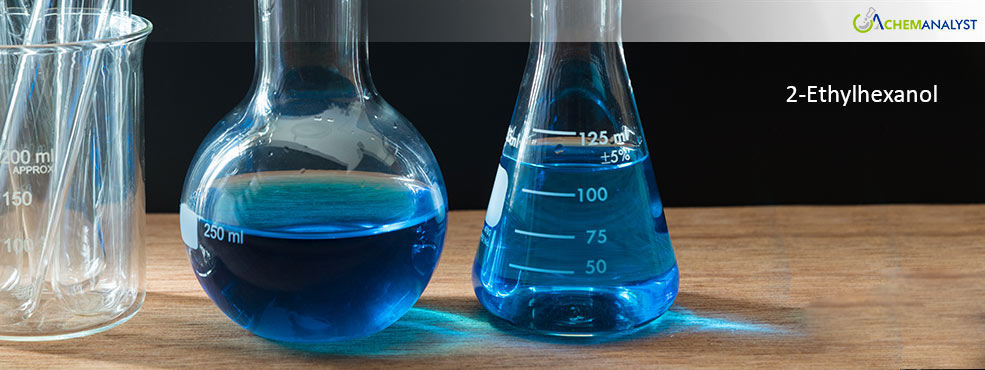Welcome To ChemAnalyst

Prices of 2-Ethylhexanol (2-EH) across the Chinese domestic market remained elevated from mid-May to early June 2025, although a marginal softening was observed during the first week of the month. The 2-EH price trend was primarily underpinned by continued tightness in supply due to multiple plant shutdowns and lower operating rates.
Supply constraints were largely driven by scheduled maintenance and unplanned outages. Operating rates of 2-EH production facilities declined by approximately 6% during the period, with notable shutdowns including Sinopec Qilu’s 250,000 MT/annum unit in Shandong (halted on June 5) and Satellite Chemical’s 180,000 MT/annum unit in Jiaxing, which was placed under maintenance on June 3, 2025. These developments significantly restricted spot availability, thereby supporting elevated pricing levels despite a softening demand landscape.
On the cost front, production economics faced downward pressure. Feedstock propylene prices declined by around 2.5% amid improved supply conditions, as operating rates at PDH (Propane Dehydrogenation) units edged higher. The average PDH unit operating rate stood at 63.01% in early June, marking a marginal 0.04% month-on-month increase, contributing to easing raw material costs for 2-EH producers.
From the demand perspective, consumption of 2-EH from the primary downstream plasticizer (DOP) sector remained subdued. Several buyers had built inventories in mid-May when prices were comparatively lower, resulting in cautious procurement activity in June. Additionally, post-Dragon Boat Festival market participation declined, with DOP producers and traders gradually retreating, contributing to a weakening of market support as indicated by the fact that DOP operating rates fell by 16% during early June 2025 thus keeping consumption of 2-EH largely limited.
While 2-EH demand from the construction sector remained a significant drag, some offsetting strength was observed from the automotive segment. Retail sales of passenger vehicles in China reached 1.93 million units during May 2025, a 10% month-on-month increase thus supporting 2-EH consumption to a limited extent. Nevertheless, China’s real estate sector continued to struggle. Cumulative sales of the top 100 developers fell year-on-year during the first five months of 2025. According to CRIC (China Real Estate Information Corp), sales declined by 7.1% YoY to 1.3 trillion yuan through May, while CIH (China Index Holding Ltd.) reported a sharper 10.8% YoY drop to 1.4 trillion yuan. For May alone, CRIC noted an 8.6% fall, and CIH indicated a 17.3% decline, reinforcing the ongoing weakness in the construction industry.
Geopolitical and macroeconomic dynamics also influenced the 2-EH market. Renewed US-China trade optimism and the announcement of a temporary pause in tariffs boosted sentiment across upstream and downstream markets especially in the plasticizer sectors. This prompted a short-lived surge in demand from the plasticizer sector, as buyers shifted from a wait-and-see approach to restocking. Furthermore, currency dynamics played a supporting role in price trends, with the Chinese Yuan appreciating by approximately 0.95% against the US Dollar in May 2025. In response, regional 2-EH producers slightly raised quotations to hedge against potential foreign exchange losses.
Despite these upward pressures, the overall price increase for 2-EH from mid-May to early June 2025 was reported at approximately 4.6% accompanied with a slight price decline of approximately 0.5% in early June 2025. However, bearish undertones persist, especially as suppliers are reportedly under pressure to meet H1 sales targets as the auditing period draws near. Expectations of softer prices for 2-EH are emerging due to a combination of weak post-holiday demand, continued structural sluggishness in the construction and plasticizer sectors, and the likelihood of suppliers lowering offers to stimulate offtake. Increased market availability in the short term may follow as producers aim to clear inventories and accordingly adjust their inventories for the next business cycle.
We use cookies to deliver the best possible experience on our website. To learn more, visit our Privacy Policy. By continuing to use this site or by closing this box, you consent to our use of cookies. More info.
